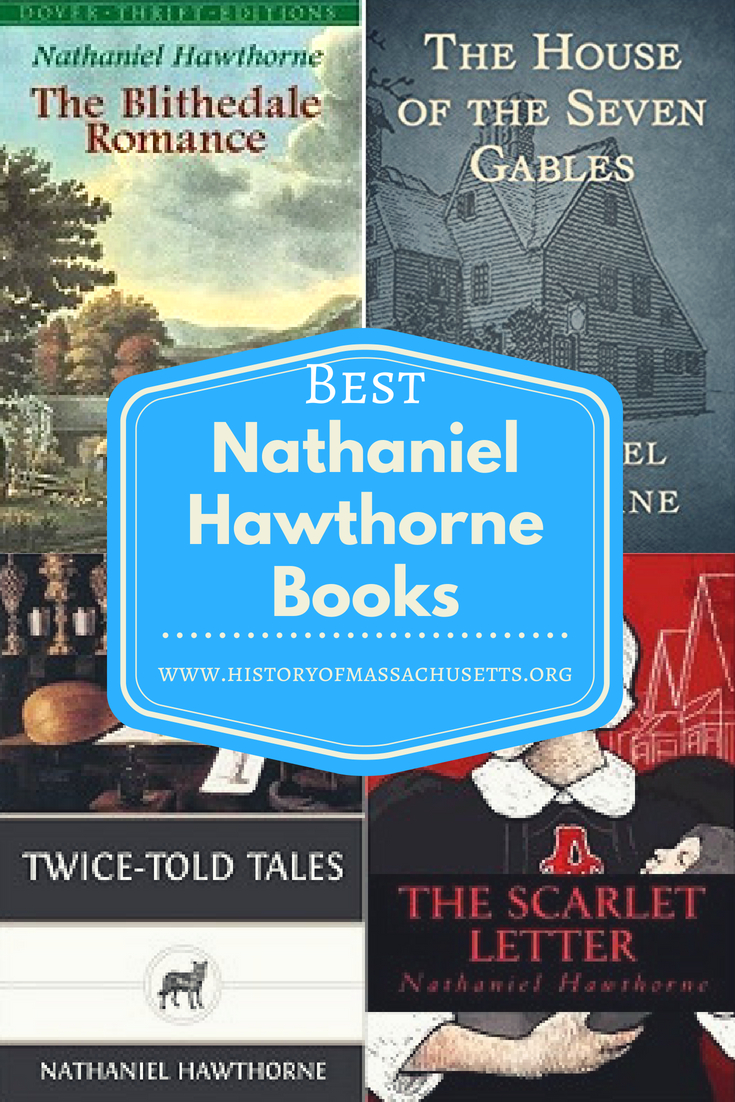Nathaniel Hawthorne wrote a number of famous novels as well as many short stories that were later published in a series of books.
Hawthorne’s writing often explores the dark side of human nature, prompting some readers to describe his writing as gloomy and melancholy.
Many of Hawthorne’s stories are set in 17th century New England and were inspired by Hawthorne’s ancestors, particularly his great-great-grandfather John Hathorne who was an infamous judge in the Salem Witch Trials.
If you are unfamiliar with Hawthorne’s body of work and aren’t sure which of his novel or books to read, I’ve compiled a list of what are considered to be his best works.
Many of these books were best-sellers and are considered classics in American literature. In addition, these books received great reviews from literary critics and from reviewers on Amazon and Goodreads.
The following is a list of Nathaniel Hawthorne’s best books and novels:
(Disclaimer: This post contains Amazon affiliate links. As an Amazon Associate I earn from qualifying purchases.)
Published in 1850, the Scarlet Letter is a novel set in 17th century Puritan New England and is about a young woman who becomes pregnant after having an affair and is ostracized by her community. The book explores themes of sin, guilt and legalism.
The novel is considered Hawthorne’s masterpiece and was an instant best seller when it was published. It was one of the first mass-produced books in America and the first printing of 2,500 copies sold out in 10 days. Sales slowed down considerably after that though and the book only sold a total of 7,800 copies during Hawthorne’s lifetime, earning him a total of $1,500.
The book was well received by critics and is still considered one of the best novels ever published. The book was listed in The Guardian’s article, the 100 Best Novels, in which it was described as “an astounding book full of intense symbolism, as strange and haunting as anything by Edgar Allen Poe, a writer whom we know Hawthorne much admired.”
Henry James, in his biography of Hawthorne, described the book as beautiful and charming:
“It is beautiful, admirable, extraordinary; it has in the highest degree that merit which I have spoken of as the mark of Hawthorne’s best things – an indefinable purity and lightness of conception… it has the inexhaustible charm and mystery of great works of art.”
Published in 1851, the novel is about an old New England family and their ancestral home and was inspired by the Turner-Ingersoll Mansion in Salem, Massachusetts. The house was owned by Hawthorne’s cousin, Susanna Ingersoll and Hawthorne visited it often.
The novel is set in the 19th century, although it features flashbacks to the 17th century, and is about the cursed old mansion and how its dark past still haunts the current inhabitants. The themes of the book center around guilt, retribution and atonement and the story involves the supernatural and witchcraft.
According to literary critic Harold Bloom, the novel explores how material and spiritual power affects a person and drives them to try to dominate others, which is a reoccurring theme that runs throughout many of Hawthorne’s novels.
The book sold well and was well received by critics and the general public. The book sold 6,710 copies in its first year, which was slightly more than The Scarlet Letter.
Henry James declared the House of Seven Gables “the closest approach we are likely to have to the Great American Novel” while Hawthorne’s friend Henry Wadsworth Longfellow called it “a weird, wild book, like all he writes.”
The book did receive a negative review from the Christian Examiner who compared it to The Scarlet Letter and said that although it leaves a more pleasant impression on the reader, the plot is “more complex, the characterization more exaggerated, and the artistic execution less perfect.”
Published in 1852, this novel is about a group of friends living at an utopian community called Blithedale farm and was inspired by Hawthorne’s own experiences living at a commune called Brook farm.
The book explores how the friendships of the group evolve over the course of the year but then eventually result in a tragedy. Throughout the story, many important social and political issues of the 19th century are addressed, such as rapid urbanization as well as women’s rights.
Henry James described the novel as one of Hawthorne’s “liveliest” stories:
“This work, as I have said, would not have been written if Hawthorne had not spent a year at Brook Farm, and though it is in no sense of the word an account of the manners or the inmates of that establishment, it will preserve the memory of the ingenious community at West Roxbury for a generation unconscious of other reminders. I hardly know what to say about it save that it is very charming; this vague unanalytic epithet is the first that comes to one’s pen in treating of Hawthorne’s novels, for their extreme amenity of form invariably suggests it; but if on the one hand it claims to be uttered, on the other it frankly confesses its inconclusiveness. Perhaps, however, in this case, it fills out the measure of appreciation more completely than in others, for the Blithedale Romance is the lightest, the brightest, the liveliest, of this company of unhumorous fictions.”
Harold Bloom, in his book Nathaniel Hawthorne, said The Blithedale Romance is one of Hawthorne’s most complex stories and this makes it difficult to figure out sometimes:
“The Blithedale Romance is perhaps the most complex of the four great romances. If it is not more ‘hell-fired’ than The Scarlet Letter, it sounds in its desperateness and ennui more ominous chords of disintegration and futility. Everything is fluid, and values are in doubt. Things are not what they seem, for The Blithedale Romance is theater. The actors group and regroup in a carefully structured series of confrontations. They speak their minds but veil their meanings.”
Published in 1860, this novel is a murder mystery and romance story involving three Americans and an Italian count in Rome, Italy. The story revolves around a murder and the impact it has on the four main characters.
The book explores themes of transgression and guilt and touches on the influence of European cultural ideas on American morality. It is considered the start of the “Americans in Europe” genre that Henry James would later develop. In fact, Henry James said it is a favorite of English-speaking tourists in Italy:
“Under either name, however, the book was a great success, and it has probably become the most popular of Hawthorne’s four novels. It is part of the intellectual equipment of the Angle-Saxon visitor to Rome, and is read by every English-speaking traveller who arrives there, who has been there, or who expects to go.”
The book was inspired by Hawthorne’s time as a United States consul in Liverpool, England in the mid-1850s, during which he visited Rome and saw the Faun of Praxiteles in the Palazzo Nuovo of the Capitoline Museum in Rome.
The book was well received by critics, although Hawthorne’s friend Ralph Waldo Emerson called the novel “mush.” James Russell Lowell, editor of the Atlantic Monthly Magazine, reviewed the book in the April 1860 edition of the magazine and praised it as a Christian parable. He also glowingly compared Hawthorne to Shakespeare and declared that “the 19th century has produced no more purely original writer than Mr. Hawthorne.”
Another fellow writer, Henry Wadsworth Longfellow, privately wrote that it was a “wonderful book” but that it had “the old, dull pain in it that runs through all of Hawthorne’s writings.”
First published in 1837, Twice-Told Tales is a collection of previously published short stories, hence the name.
The title of the collection comes from a line in Act 3, scene 4 of William Shakespeare’s The Life and Death of King John: “Life is as tedious as a twice-told tale / Vexing the dull ear of a drowsy man.”
The stories were originally published anonymously in magazines and annuals such as The Token. After the stories became popular, Hawthorne was revealed as the author in an article in the Boston Post, which prompted him to publish them in a collection.
To create this collection, Hawthorne chose what he considered his best stories. Yet, in the preface of the third edition of the book, Hawthorne points out, in a self-deprecating manner, that the stories are not remarkable and were not successful when they were originally published but that he was proud of them nonetheless:
“These stories were published in Magazines and Annuals, extending over a period of ten or twelve years, and compromising the whole of the writer’s young manhood, without making (so far as he has ever been aware) the slightest impression on the public…They have the pale tint of flowers that blossomed in too retired a shade – the coolness of a meditative habit, which diffuses itself through the feeling and observation of every sketch. Instead of passion, there is sentiment; and, even in what purport to be pictures of actual life, we have allegory, not always so warmly dressed in its habiliments of flesh and blood, as to be taken into the reader’s mind without a shiver….The sketches are not, it is hardly necessary to say, profound; but it is rather more remarkable that they so seldom, if ever, show any design on the writer’s part to make them so. They have none of the abstruseness of idea, or obscurity of expression, which mark the written communications of a solitary mind with itself. They never need translation…To conclude, however, – these volumes have opened the way to most agreeable associations, and to the formation of imperishable friendships…He is therefore satisfied with what the Twice-Told Tales have done for him, and feels it to be far better than fame.”
Some critics believe that Hawthorne was trying to distance himself from his earlier work and felt compelled to criticize the stories so he wouldn’t be judged too harshly by his new fans.
The book was well received by critics but didn’t sell well. Longfellow wrote a good review of the book in the North American Review and declared Hawthorne “A new star…in the heaven of poetry.”
Shortly after the book was published in 1837, sales plummeted when the Panic of 1837 began and the publisher went out of business within a year. In 1841, Hawthorne signed a deal with publisher James Munroe to issue a new, two-volume edition of Twice-Told Tales that included more stories than the previous edition. The second edition of the book was published in 1842 and it did not sell well either.
Edgar Allen Poe reviewed the second edition for Graham’s Magazine in 1842 and despite a few minor complaints, declared Hawthorne “a man of the truest genius” and described the stories as beautiful, imaginative and original. Poe highly recommended that readers buy the book, stating:
“We know of few compositions which the critic can more honestly commend than these ‘Twice-Told Tales.’ As Americans, we feel proud of the book.”
After the success of the Scarlet Letter in 1850, a third edition of Twice-Told Tales was published in 1851 by publisher James Thomas Fields. Hawthorne wrote a new preface in which explained that the stories “may be understood and felt by anybody, who will give himself the trouble to read it, and will take up the book in a proper mood.”
The first edition of the book contained about 20 stories while the later editions contain 40 stories, which are:
The Gray Champion
Sunday at Home
The Wedding-Knell
The Minister’s Black Veil
The May-Pole of Merry Mount
The Gentle Boy
Mr. Higginbotham’s Catastrophe
Little Annie’s Ramble
Wakefield
A Rill from the Town-Pump
The Great Carbuncle
The Prophetic Pictures
David Swan
Sights from a Steeple
The Hollow of the Three Hills
The Toll-Gatherer’s Day
The Vision of the Fountain
Fancy’s Show Box
Dr. Heidegger’s Experiment
Legends of the Province-House
The Haunted Mind
The Village Uncle
The Ambitious Guest
The Sister Years
Snow-Flakes
The Seven Vagabonds
The White Old Maid
Peter Goldthwaite’s Treasure
Chippings with a Chisel
The Shaker Bridal
Night Sketches
Endicott and the Red Cross
The Lily’s Quest
Foot-prints on the Sea-shore
Edward Fane’s Rosebud
The Threefold Destiny
First published in 1846, Mosses from an Old Manse is a collection of previously published short stories.
The collection was named after the Old Manse in Concord, which Hawthorne rented from Ralph Waldo Emerson when he first moved to Concord in the 1830s.
Like many of Hawthorne’s stories, the tales in the collection contain many allegories that highlight the negative aspects of human nature. In the introduction to the book, Hawthorne describes these stories, in his usual gloomy, self-deprecating way, as faded old flowers:
“All I had to show, as a man of letters, were these few tales and essays which had blossomed out like flowers in the calm summer of my heart and mind. Save editing (any easy task) the journal of my friend of many years, the African Cruiser, I had done nothing else. With these idle weeds and withering blossoms I have inter-mixed some that were produced long ago – old, faded things, reminding me of flowers pressed between the leaves of a book – and now offer the bouquet, such as it is, to any whom it may please.”
The book was well received by critics but didn’t sell well. Herman Melville, who didn’t read the book until four years after it was published, wrote a glowing review of it in the Literary Magazine. In the review, Melville also compared Hawthorne to Shakespeare and declared the collection to be Hawthorne’s best work to date:
“Moreover, that whatever Nathaniel Hawthorne may hereafter write, ‘The Mosses from an Old Manse’ will be ultimately accounted his masterpiece.”
The first edition of the book includes the following stories:
The Old Manse
The Birth-Mark
A Select Party
Young Goodman Brown
Rappaccini’s Daughter
Mrs. Bullfrog
Fire-Worship
Buds and Bird-Voices
Monsieur du Moir
The Hall of Fantasy
The Celestial Rail-Road
The Procession Line of Life
The New Adam and Eve
Egotism, or The Bosom-Serpent
The Christmas Banquet
Drowne’s Wooden Image
The Intelligence Office
Roger Malvin’s Burial
P.’s Correspondence
Earth’s Holocaust
The Old Apple-Dealer
The Artist of the Beautiful
A Virtuoso’s Collection
The second edition contains the stories listed above as well as the following additions:
Feathertop
Passages from a Relinquished Work
Sketches from Memory
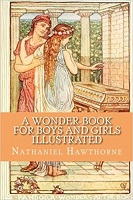 7. A Wonder Book for Girls and Boys
7. A Wonder Book for Girls and Boys
Published in 1851, this children’s book is a collection of Greek myths. The stories in the book are all stories within a story and are narrated by a character named Eustace Bright who is telling them to a group of children at Tanglewood, an area of Lenox, Massachusetts.
In the preface, Hawthorne explains that the book differs from most children’s books because it doesn’t talk down to its readers. Hawthorne said he intentionally wrote it that way because he felt that children are perfectly capable of understanding deep thoughts:
“In performing this pleasant task…the author has not always thought it necessary to write downward, in order to meet the comprehension of children. He has generally suffered the theme to soar, whenever such was its tendency, and when he himself was buoyant enough to follow without an effort. Children possess an unestimated sensibility to whatever is deep or high, in imagination or feeling, so long as it is simple, likewise. It is only the artificial and the complex that bewilder them.”
The book was well received by critics and sold out its first printing, selling about 4,677 sales in the first two months and over 14,000 copies in the 1850s.
Henry James declared both Wonder Book and its sequel, Tanglewood Tales, as charming and ahead of their time:
“They are not among his most serious literary titles, but if I may trust my own early impression of them, they are among the most charming literary services that have been rendered to children in an age (and especially in a country) in which the exactions of the infant mind have exerted much too palpable an influence upon literature. Hawthorne’s stories are the old Greek myths, made more vivid to the childish imagination by an infusion of details which both deepen and and explain their marvels.”
Many reviewers on Amazon said the language in the book is beautiful and the reinterpretations of the old Greek myths are delightful and imaginative. A number of reviewers also commented that the book has a lot of big words that might be challenging to younger children but said the language and vocabulary are part of its charm.
The book contains the myths of:
The Gorgon’s Head
The Golden Touch
The Paradise of Children
The Three Golden Apples
The Miraculous Pitcher
The Chimaera
Published in 1853 as a sequel to A Wonder Book for Girls and Boys, this children’s book is also a collection of Greek myths.
Unlike A Wonder Book for Girls and Boys, these stories are not narrated by the fictional character Eustace Bright, as the previous book was, and are individual stories told on their own, although in the introduction Hawthorne says that it was Eustace Bright who gave him these stories. Hawthorne explains that although the stories are old fables, they are universal and relatable to children:
“But Eustace told me that these myths were the most singular things in the world, and that he was invariably astonished, whenever he began to relate one, by the readiness with which it adapted itself to the childish purity of his auditors. The objectional characteristics seem to be a parastical growth, having no essential connection with the original fable. They fall away, and are thought of no more, the instant he put his imagination in sympathy with the innocent little circle, whose wide-open eyes are fixed so eagerly upon him. Thus the stories (not by any strained effort of the narrator’s but in harmony with their inherent germ) transform themselves, and re-assume the shapes which they might be supposed to possess in the pure childhood of the world.”
After finishing the book, Hawthorne wrote to a friend that he was quite proud of these children’s books, declaring “I never did anything else so well as these old baby stories.”
The book includes the myths of:
Theseus and the Minotaur
Antaeus and the Pygmies
Dragon’s Teeth
Circe’s Palace
Proserpina, Ceres, Pluto and the Pomegranate Seed
Jason and the Golden Fleece
Sources:
King, Stephen. Everything’s Eventual:14 Dark Tales. Pocket Books, 2002.
Bloom, Harold. Nathaniel Hawthorne. Chelsea House Publishers, 2003.
James, Henry. Hawthorne. Macmillan and Co, 1879.
Bell, Michael Davitt. Culture, Genre, and Literary Vocation: Selected Essays on American Literature. University of Chicago Press, 2001.
Nathaniel Hawthorne: The Contemporary Review. Edited by John L. Idol and Buford Jones, Cambridge University Press, 1994.
“Poe’s Review of Twice Told Tales.” Eldritch Press, www.eldritchpress.org/nh/nhpoe1.html
Melville, Herman.“Hawthorne and His Mosses.” The Literary Magazine, Evert Duyckinck, 17 & 24 Aug. 1850, people.virginia.edu/~sfr/enam315/hmmosses.html
Donavel, David. “Alienation in ‘Feathertop.’” Hawthorne in Salem, www.hawthorneinsalem.org/Literature/AlienationOfTheArtist/feathertop/Introduction.html
Lowell, James Russell. “The Marble Faun, by Nathaniel Hawthorne.” Atlantic Monthly Magazine, April 1860, www.theatlantic.com/past/docs/unbound/classrev/marblefa.htm
Frazier, Kevin. “The Marble Faun: Hawthorne Feeds on Shadows.” The Millions, 14 Jan. 2010,
www.themillions.com/2010/01/the-marble-faun-hawthorne-feeds-on-shadows.html
McKeithan, D.M. “Hawthorne’s Young Goodman Brown: An Interpretation.” Modern Language Notes, Vol. 67, No. 2, Feb. 1952, pp: 93-96, John Hopkins University Press, www.jstor.org/stable/2909960?seq=1#page_scan_tab_contents
Modugno, Joseph R. “The Salem Witchcraft Hysteria of 1692 and Young Goodman Brown.” Hawthorne in Salem,
www.hawthorneinsalem.org/Literature/Quakers&Witches/YoungGoodmanBrown/Introduction.html
McCrum, Robert. “The 100 Best Novels: No 16: The Scarlet Letter by Nathaniel Hawthorne.” The Guardian, 6 Jan. 2014, www.theguardian.com/books/2014/jan/06/scarlet-letter-nathaniel-hawthorne-100-best-novels
Hawthorne, Julian. “The Scarlet Letter by Nathaniel Hawthorne.” Atlantic Monthly Magazine, April 1886,
www.theatlantic.com/magazine/archive/1886/04/the-scarlet-letter-by-nathaniel-hawthorne/304668/8/

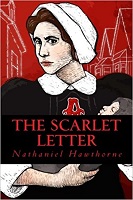 1.
1. 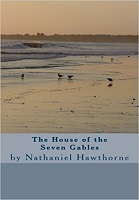 2.
2.  3.
3. 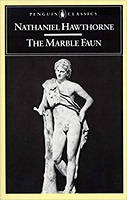 4.
4. 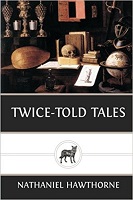 5.
5. 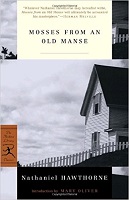 6.
6. 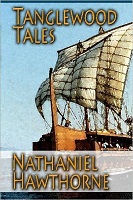 8.
8. 